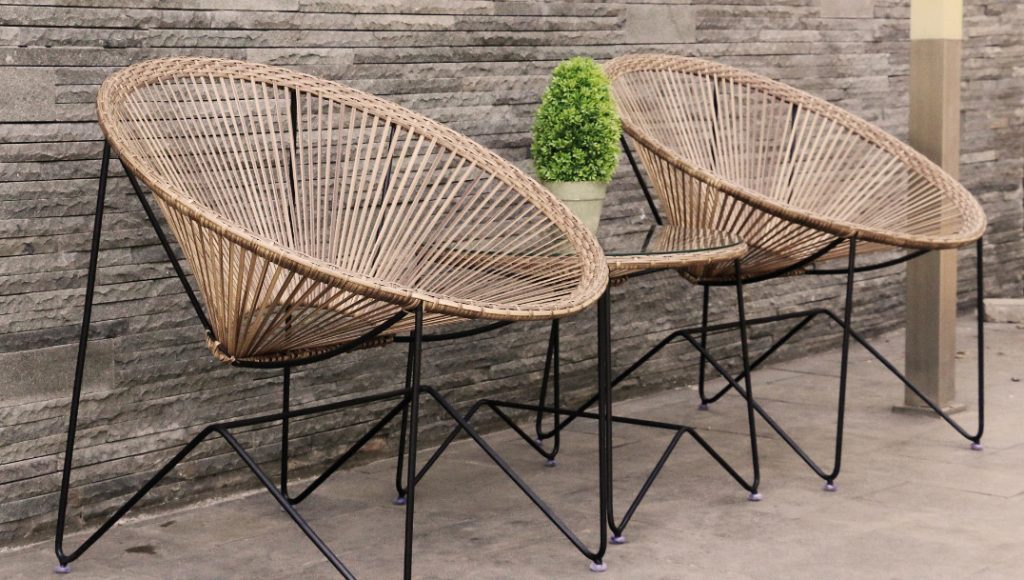Outdoor furniture plays a significant role in shaping our experience of nature and leisure. Whether on a patio, garden, balcony, or resort deck, the right choice of furniture enhances comfort, style, and functionality. Outdoor furniture is no longer just an accessory; it has become a crucial component of exterior design, offering endless possibilities in aesthetics and utility. Over the past few decades, its development has evolved in parallel with material innovation, climate resilience, and lifestyle preferences.
This article aims to provide a comprehensive guide to outdoor furniture—from understanding materials, manufacturing processes, design styles, maintenance, and buying tips, to exploring global export trends and how countries like Indonesia contribute to the outdoor furniture market.
Understanding the Essence of Outdoor Furniture
At its core, outdoor furniture must fulfill a delicate balance of three principles: comfort, durability, and style. These items are placed in environments exposed to varying weather conditions—sun, wind, rain, and sometimes snow—thus requiring stronger resistance than indoor furniture. While comfort is a universal expectation, style preferences tend to vary depending on region, cultural aesthetics, and functional use.
From lounge sets and dining tables to sunbeds and patio umbrellas, every outdoor furniture category serves a specific purpose. However, the common denominator among all of them remains their ability to resist outdoor elements without compromising on design.
The Materials That Define Outdoor Durability
One of the most critical decisions in outdoor furniture is the choice of material. Materials determine not only the aesthetic of the piece but also its resistance to weather and aging.
Teak Wood: A Natural Favorite
Teak is often considered the king of hardwood for outdoor furniture. Its natural oils make it highly resistant to water, pests, and rot, making it ideal for long-term outdoor use. Over time, teak develops a graceful silver patina, which many designers consider attractive and luxurious. The material is dense and heavy, ensuring that furniture remains stable even in windy conditions.
Synthetic Rattan: A Modern Solution
Synthetic rattan, also known as all-weather wicker, offers the classic woven look of traditional rattan with improved resilience. Made from polyethylene or resin-based fibers, synthetic rattan can withstand UV rays, rain, and mildew. It’s lightweight, stylish, and often woven over an aluminum frame, providing structure and form. This material is particularly popular in tropical resort setups and contemporary patios.
Powder-Coated Aluminum: Lightweight Strength
Aluminum is widely appreciated for being rust-proof and lightweight. When powder-coated, it resists corrosion, fading, and scratching. This combination makes aluminum a favorite for those seeking minimalist, low-maintenance outdoor furniture. Its adaptability to different designs—from sleek modern benches to intricate bistro sets—makes it incredibly versatile.
Stainless Steel and Iron: Industrial Elegance
While heavier and more prone to heat absorption, stainless steel and wrought iron offer unmatched strength and a bold, industrial aesthetic. These materials are typically treated with weatherproof coatings to prevent rust. When paired with soft cushions, metal-based furniture offers both strength and style.
Plastic, Resin, and Polywood: Affordable Options
Modern plastic and resin furniture have come a long way. They are mold-resistant, lightweight, and available in various colors and designs. Polywood, a high-density polyethylene material made from recycled plastics, mimics wood’s look while offering excellent outdoor performance. It’s sustainable, easy to clean, and often UV-resistant.
The Role of Design in Outdoor Spaces
Outdoor furniture is not merely functional; it’s an extension of one’s personal or brand identity. The design reflects how the space will be used—whether for entertaining guests, relaxing solo, or accommodating commercial visitors in resorts and cafes.
Contemporary Outdoor Styles
Clean lines, monochromatic tones, and minimalist silhouettes define contemporary outdoor furniture. Aluminum frames paired with neutral cushions, or dark synthetic rattan in streamlined designs, reflect the modern homeowner’s taste for simplicity and elegance.
Bohemian and Tropical Settings
Boho styles lean heavily on natural textures, layered fabrics, and organic shapes. Here, woven rattan, bamboo accents, and colorful cushions come together to create a relaxed, earthy atmosphere. This style thrives in tropical environments and beachside settings.
Rustic and Farmhouse Ambience
Wood, especially reclaimed or rough-finished teak, gives off a rustic charm. Benches, picnic tables, and Adirondack chairs enhance countryside aesthetics. These setups emphasize warmth, natural beauty, and a lived-in feel.
Craftsmanship and Production Process
High-quality outdoor furniture requires not just good materials but expert craftsmanship. Joinery methods, weaving techniques, and finishing processes all contribute to the longevity and aesthetics of the product.
In rattan furniture, for instance, hand-weaving remains a vital skill passed down through generations, particularly in Indonesian and Southeast Asian workshops. For wooden furniture, kiln-drying is a crucial step that prevents warping and cracking. In metal furniture, welding and powder coating ensure a strong, polished finish.
Caring for Outdoor Furniture
No matter how durable a piece of furniture is, maintenance ensures it remains functional and attractive for years. The level and type of care depend heavily on the materials used.
Teak should be periodically cleaned with mild soap and water. For those who prefer the original golden tone, applying teak oil helps maintain its color. Synthetic rattan should be dusted and washed with a soft brush. Metal furniture may require occasional rustproofing and repainting, while fabric cushions must be stored or covered during extreme weather.
Investing in waterproof covers, storing lightweight furniture during storms, and cleaning spills immediately are standard practices that help preserve outdoor furniture.
Outdoor Furniture for Commercial Use
Hotels, cafes, resorts, and spas often invest in high-grade outdoor furniture that can withstand both natural elements and frequent use. For commercial projects, aesthetics and comfort are just as important as maintenance and durability. Many suppliers provide custom design services, matching the furniture with the theme and branding of the establishment.
Outdoor dining sets, sun loungers, bar tables, and modular sofas are common in the hospitality sector. Materials like teak, synthetic rattan, and aluminum dominate this market, especially when sourced from reputable B2B manufacturers.
The Rise of Sustainable and Eco-Friendly Outdoor Furniture
As environmental awareness grows, outdoor furniture made from sustainable materials is becoming more popular. Teak certified by FSC (Forest Stewardship Council) ensures responsible forestry practices. Recycled plastics used in Polywood contribute to reduced landfill waste.
Manufacturers are also adopting eco-friendly production techniques, such as water-based adhesives, natural finishes, and solar-powered factories. The consumer demand for green products continues to influence how furniture companies approach design and sourcing.
Outdoor Furniture Trends
The global market for outdoor furniture is expected to grow significantly. Consumer preferences are shifting toward multi-functional furniture—items that blend comfort, storage, and style. Modular furniture that adapts to various layouts and needs is also on the rise.
Color trends are leaning toward natural hues—earthy browns, charcoal greys, muted greens—while bright pops of color are reserved for accent cushions and accessories. Foldable and stackable options are also gaining traction, especially in urban areas with limited space.
Another major trend is the integration of technology, such as solar-powered tables, built-in lighting, or smart weather sensors that can notify owners to cover or store furniture before rain.
Indonesia as a Key Player in Outdoor Furniture Export
Indonesia holds a prominent position in the global furniture export market, particularly in rattan and teak products. With decades of craftsmanship tradition, abundant raw materials, and skilled labor, the country has become a preferred sourcing hub for global furniture brands, especially for outdoor collections.
Cities like Jepara and Cirebon are well-known centers of furniture production. Manufacturers in Indonesia often cater to large hotel projects, wholesale distributors, and even global retailers. They offer OEM and ODM services, ensuring flexibility for different market demands.
The Indonesian government supports furniture exports through trade agreements, certification programs, and participation in international expos, helping solidify the country’s reputation as a reliable manufacturer of outdoor furniture.
Buying Outdoor Furniture: What You Need to Consider
Choosing outdoor furniture requires careful consideration of space, material, budget, and intended use. Buyers should evaluate whether the furniture will be exposed to direct sunlight, high humidity, or heavy rain. It’s important to select UV-resistant fabrics, rustproof metals, or water-repellent wood for durability.
Dimensions should align with the layout of the space. Compact balconies may require foldable sets, while spacious gardens can accommodate larger dining or lounge collections. Comfort should not be overlooked—test cushion firmness, seat depth, and backrest angle before committing to a set.
Long-term warranties, maintenance guides, and delivery logistics also play a role, especially for bulk buyers or international purchasers. Retailers should offer transparent policies and after-sales service to enhance customer satisfaction.
The Future Is Outdoor-Ready
Outdoor furniture has evolved into a reflection of lifestyle, design sensibility, and environmental responsibility. Whether you’re designing a private terrace or furnishing a luxury resort, the options are endless, and the impact is lasting. With the right combination of materials, craftsmanship, and care, outdoor furniture serves as a long-term investment in comfort and beauty.
As innovation continues in materials, sustainability, and design, outdoor furniture is poised to remain a vibrant and growing part of the global market. The future of outdoor living is not only stylish but smart, sustainable, and deeply connected to how we interact with our natural surroundings.

